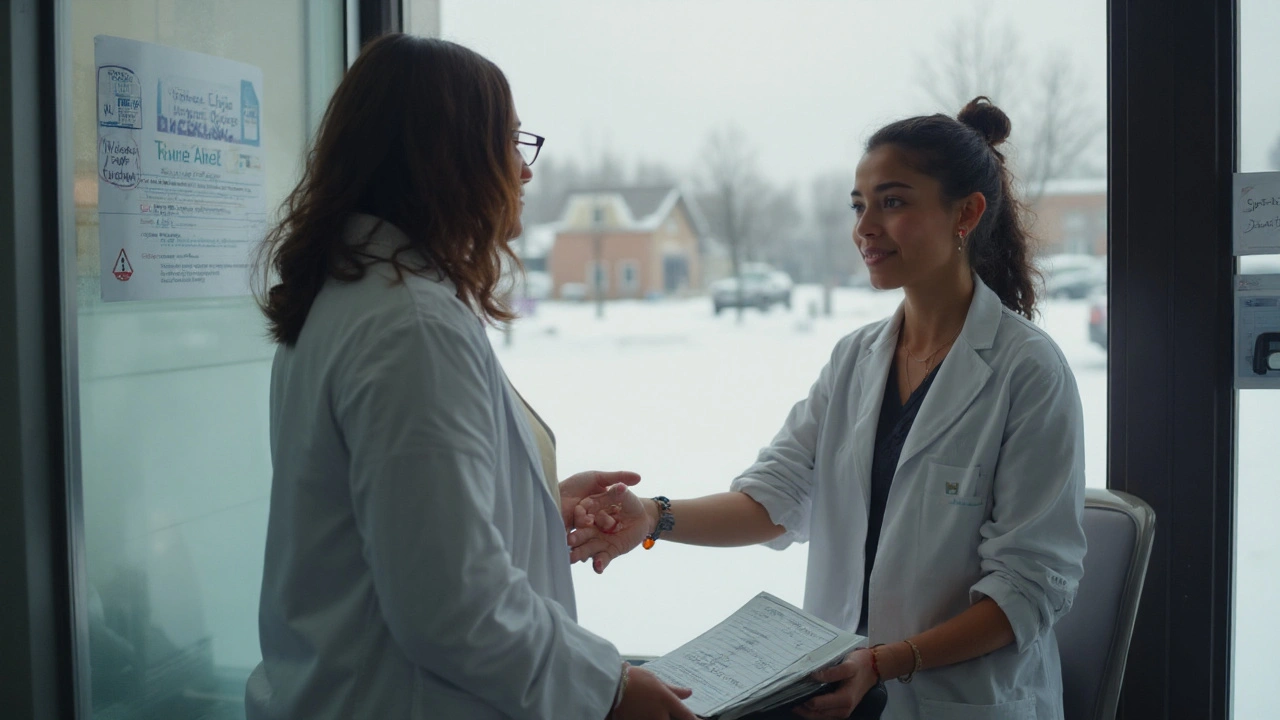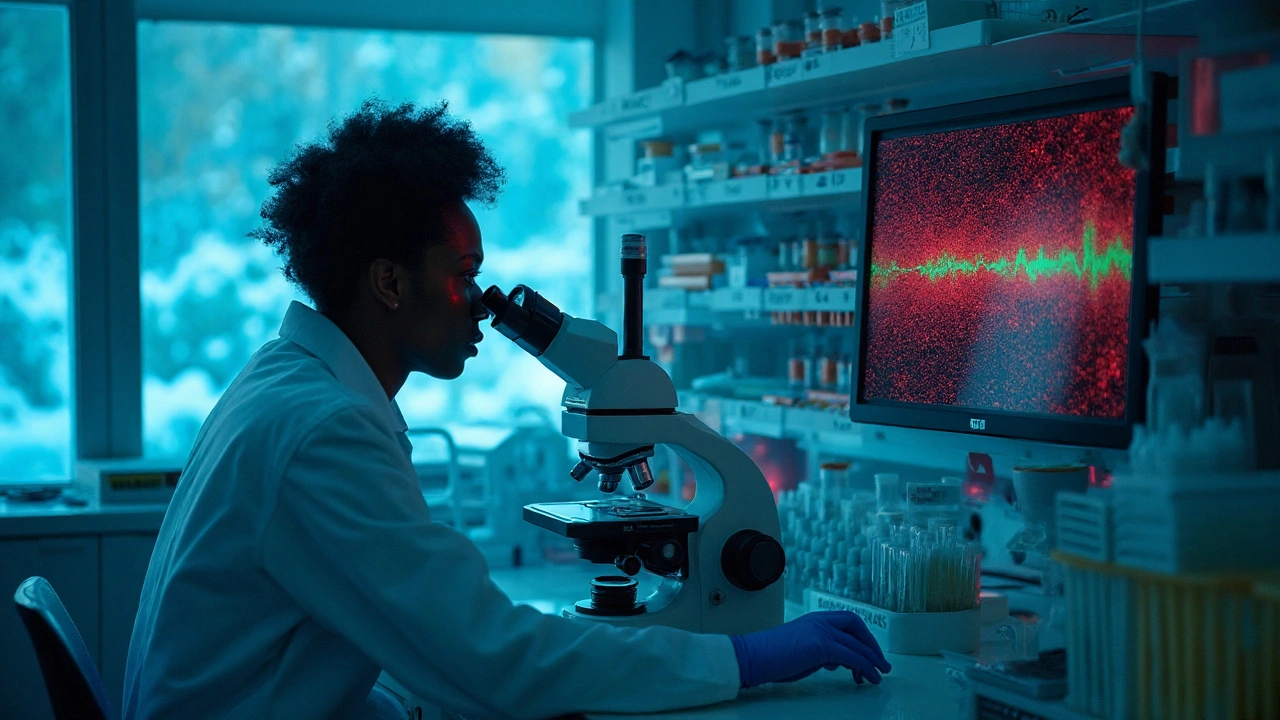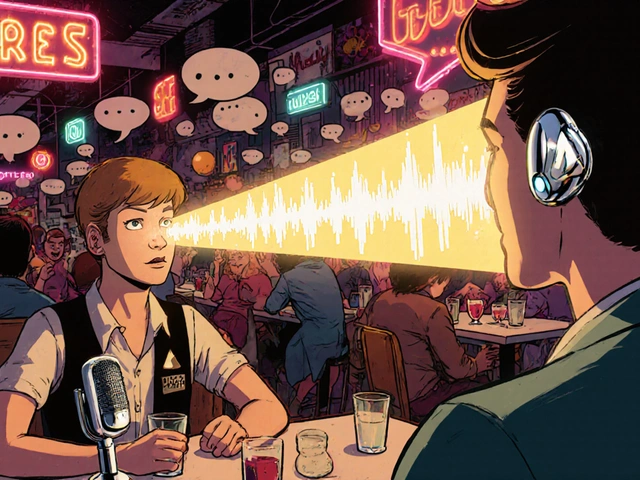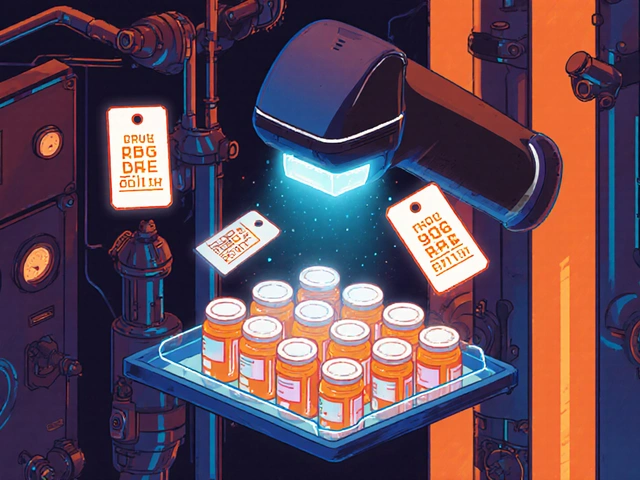
You don’t get do-overs with acute leukemia. When the subtype carries the Philadelphia chromosome, every week you wait can shrink treatment options and raise risks. The good news: getting to the right tests fast often flips the script-from crisis management to a plan that actually targets the disease.
- TL;DR
- Philadelphia chromosome-positive acute lymphoblastic leukemia (Ph+ ALL) needs rapid testing (BCR-ABL1 by PCR/FISH) at first suspicion.
- Early diagnosis improves remission rates, lowers treatment complications, and boosts survival-especially when minimal residual disease (MRD) turns negative.
- Ask for a full blood count with smear, flow cytometry, and BCR-ABL1 testing the same day blasts are seen.
- Targeted drugs (TKIs) + modern immunotherapy work best when started promptly and guided by MRD.
Why early detection matters in Chromosome-Positive Lymphoblastic Leukemia
Philadelphia chromosome-positive ALL is driven by a specific genetic change called BCR-ABL1. This fusion gene acts like a stuck accelerator on leukemia cells. Spot it early, and doctors can shut it down with targeted tyrosine kinase inhibitors (TKIs) such as imatinib, dasatinib, or ponatinib-often on day one of treatment. That shift is huge: decades ago, adults with this subtype had poor outcomes. With TKIs plus modern combinations, remission is now common and long-term survival is realistic.
Timing changes everything for three reasons:
- Starting targeted therapy early reduces the leukemia burden before complications set in.
- It keeps you eligible for the full toolkit-TKIs, immunotherapy, and sometimes stem cell transplant-without emergency detours.
- It enables MRD-guided decisions. If you clear MRD early, you may avoid heavier treatments; if not, your team can intensify or switch tactics quickly.
Guidelines back this up. The National Cancer Institute’s PDQ, ASH (American Society of Hematology), and ESMO (European Society for Medical Oncology) all stress doing BCR-ABL1 testing at diagnosis for suspected ALL, then using MRD to steer the plan. In Australia, these principles are echoed in Cancer Council resources, eviQ protocols, and the Australasian Leukaemia & Lymphoma Group recommendations.
“The presence of the Philadelphia chromosome (BCR-ABL1) has prognostic and therapeutic implications in ALL.” - National Cancer Institute, PDQ on Adult ALL (2024 update)
Spot the red flags: symptoms and risk clues
Ph+ ALL doesn’t ask permission. It often shows up fast. Watch for these patterns, especially if several cluster together over a few weeks.
- Low red cells: fatigue, shortness of breath, looking pale
- Low platelets: easy bruising, nosebleeds, gum bleeding, tiny red spots (petechiae)
- Low neutrophils: fevers that don’t settle, infections that feel “too strong for a cold”
- Bone and joint pain, especially in kids; back or hip pain that disturbs sleep
- Swollen lymph nodes, night sweats, unintentional weight loss
- Fullness under the left ribs (enlarged spleen)
Who gets it? Ph+ ALL is uncommon but more likely in adults than children. It’s not contagious. It’s rarely inherited. Prior chemotherapy/radiation, certain genetic backgrounds, and older age can raise risk, but many people have no known risk factors. If your gut says the pattern isn’t normal-especially fever + bruising + extreme fatigue-don’t wait for a perfect picture. Get a blood count today.
Rule of thumb: two or more of these symptom clusters for more than 1-2 weeks or any rapid decline calls for urgent testing the same day-not in a month.

How diagnosis works: tests, timelines, and what to ask
Diagnosis is a sequence. Doing the right tests in the right order saves days. Here’s a fast, clear path you can use with your GP, emergency doctor, or haematology clinic.
- Same-day blood work when leukemia is suspected
- Full blood count (FBC/CBC) with peripheral smear. Ask the lab to flag “blasts” urgently to the doctor.
- Coagulation profile, LDH, uric acid, electrolytes, kidney and liver function. These help manage complications like tumor lysis syndrome.
- Confirm the subtype quickly
- Flow cytometry on blood or bone marrow: identifies ALL cells and whether it’s B-cell or T-cell.
- Cytogenetics and molecular tests for BCR-ABL1: FISH (results often within 24-48 hours) and PCR (quantifies the fusion; typically 1-5 days). If blasts are seen, request both upfront-don’t wait for one to come back first.
- Bone marrow biopsy
- Usually done within 24-72 hours after blasts are found to confirm diagnosis and get enough cells for all tests.
- Imaging and additional checks
- Consider lumbar puncture to check for central nervous system involvement (timing per your team).
- Screen for infections and vaccination history before starting immunosuppressive therapy.
What to ask the team on day one:
- “Has BCR-ABL1 testing been sent by FISH and PCR?”
- “What is the expected turnaround time for those results?”
- “If Ph+ ALL is confirmed, which TKI will we start and when?”
- “How will you measure MRD and at what time points?”
In Australia: Medicare (MBS) typically covers diagnostic flow cytometry and BCR-ABL1 testing when ALL is suspected. TKIs for Ph+ ALL, including imatinib, dasatinib, and ponatinib, are PBS-listed, subject to clinical criteria. Your haematology unit will organise access; ask about the exact PBS item numbers and any bridging supply if inpatient.
Turnaround tips:
- If your local lab can’t do FISH/PCR quickly, ask for samples to be couriered to a reference lab the same day.
- While waiting for molecular confirmation, doctors often start a steroid prephase to stabilise you, then add a TKI as soon as Ph+ status is confirmed (or sooner if clinical suspicion is very high).
What early detection changes in treatment
When BCR-ABL1 is caught early, the treatment plan sharpens:
- Targeted therapy immediately: a TKI is added to chemotherapy or, in some protocols, paired with steroid and immunotherapy first.
- Lower complication risk: early control reduces tumor lysis, bleeding, and infections from very high disease burden.
- MRD-guided choices: if you clear MRD early, your team might dial back intensity; if MRD persists, they can escalate or switch TKIs or add immunotherapies like blinatumomab.
- Transplant decisions: early deep remissions can expand or limit the need for allogeneic stem cell transplant depending on age, fitness, MRD, and mutation profile (e.g., T315I).
What outcomes look like today:
- Adults: with TKI-based regimens, complete remission rates often exceed 90%. Five-year overall survival in recent series has climbed into the 40-60% range, higher when MRD turns negative early. Sources: ASH guideline updates (2023-2024), ESMO 2023.
- Children and adolescents: with TKI integration, long-term event-free survival can reach 70-80% in some protocols. Sources: Children’s Oncology Group reports, NCI PDQ Pediatric ALL.
MRD is the compass. ASH and ESMO call MRD the strongest predictor of relapse across ALL subtypes. Clearing MRD early-especially within the first 3 months-correlates with fewer relapses and better survival. If MRD lingers, swapping TKIs (e.g., to a more potent agent like ponatinib in certain mutations) or adding immunotherapy can make the difference.
Practical point from the ward: patients who arrive before they’re in crisis tolerate therapy better. They spend fewer days in ICU, get home sooner, and are more likely to stay on schedule-key for beating a fast cancer.
| Outcome metric | Early detection and rapid TKI start | Late detection with complications | Evidence direction |
|---|---|---|---|
| Induction mortality | ~1-3% | ~5-10% | Lower with early control of disease burden (ASH 2023 summaries) |
| Complete remission rate | ~90-95% | ~70-85% | Higher when TKIs are integrated promptly (ESMO 2023) |
| Early MRD negativity | ~50-70% | ~20-40% | Strong predictor of relapse risk (ASH/ESMO) |
| 5-year overall survival (adults) | ~45-60% | ~20-35% | Improved with TKI + MRD-guided therapy (NCI PDQ, ASH) |
Ranges vary by age, protocol, and centre. Your haematologist will interpret these in the context of your exact genetics, MRD, and fitness.

Actionable tools: checklists, decision aids, and FAQs
Here’s a compact set of tools you can use today.
72-hour action plan if leukemia is suspected:
- Today: Get an urgent FBC with smear. If blasts are reported, ask your doctor to call haematology immediately.
- Within 24 hours: Send flow cytometry, FISH for BCR-ABL1, and PCR for BCR-ABL1. Don’t wait for one result before sending the others.
- Start supportive care: fluids, tumor lysis labs, infection work-up; steroid prephase if advised by haematology.
- Book bone marrow biopsy within 24-72 hours to confirm and stage.
- If Ph+ is confirmed or strongly suspected: start a TKI per protocol and plan MRD testing schedule.
Questions to bring to appointments:
- “Is this B-ALL or T-ALL, and do I have BCR-ABL1?”
- “Which TKI is best for me at the start, and why?”
- “What MRD threshold are we aiming for, and when will we check it?”
- “If MRD doesn’t clear, what’s our next move-different TKI, blinatumomab, inotuzumab, CAR T, or transplant?”
Decision hints (not a substitute for medical advice):
- Severe symptoms + blasts on blood smear = go to hospital now, not next week.
- High suspicion but no blasts yet? Repeat bloods in 24-48 hours and escalate if symptoms worsen.
- Negative initial FISH with strong clinical suspicion? Ask for PCR and for the sample to be reviewed at a reference centre; some BCR-ABL1 rearrangements are cryptic.
Common pitfalls to avoid:
- Waiting for “more symptoms” before testing-ALL can move fast.
- Sending FISH but not PCR-or vice versa. Use both.
- Assuming it’s iron deficiency when bruising and fevers are also present.
- Delaying treatment until every single test is back. Your team can start stabilising and target therapy as results roll in.
Pro tips from haematology teams:
- Bring a written list of your meds, allergies, and recent infections. It speeds safe chemo and TKI choices.
- Ask for a central line early if chemotherapy is planned-it makes treatment smoother and safer.
- Discuss fertility preservation before intensive therapy if relevant; timing can be tight but not impossible.
Mini-FAQ
- What is Ph+ ALL in plain language? It’s ALL with a specific swapped piece of DNA between chromosomes 9 and 22 that creates BCR-ABL1, a growth signal. We can drug that signal.
- Is it inherited? Almost never. It usually happens in the leukemia cells only.
- Does early detection always mean no transplant? Not always. Early MRD negativity can reduce transplant need for some, but age, mutations, and response still drive the call.
- How fast do results come? FBC is same day; FISH 1-2 days; PCR 1-5 days depending on the lab; flow cytometry often within 24-48 hours.
- Are TKIs safe? They have side effects (fluid retention, low blood counts, liver changes, vascular risks with some agents), but they’re targeted. Your team monitors closely.
- Do vaccines matter? Yes-after remission, your team will plan catch-up or revaccination. Live vaccines are usually avoided during active treatment.
Local notes for readers in Australia:
- Public hospitals coordinate most ALL care. In Western Australia, tertiary centres in Perth manage complex cases; referrals move quickly when blasts are seen.
- PBS access for TKIs is routine for Ph+ ALL; your haematologist handles the paperwork.
- If you’re in a regional or remote area, ask to start work-up locally while arranging transfer to a centre that treats adult or paediatric ALL weekly-not occasionally.
Credible sources used to build this guidance: National Cancer Institute PDQ (Adult and Childhood ALL, 2024 updates), American Society of Hematology recommendations and 2023-2024 reviews, ESMO Clinical Practice Guideline for ALL (2023), Leukemia & Lymphoma Society patient summaries (2024), and Australian resources including eviQ protocols and Cancer Council fact sheets.
Examples to make it real:
- Adult with fevers and bruising: GP sees platelets at 25, hemoglobin 85, blasts on smear-calls haematology; patient goes to hospital that day; FISH positive for BCR-ABL1 next morning; TKI started within 24 hours. Remission after induction, MRD negative by week 12.
- Child with leg pain, night sweats, and fatigue: Paediatrician orders same-day bloods; blasts found; transfer to paediatric oncology; BCR-ABL1 confirmed; TKI added to protocol. Family gets MRD report at end of induction to guide next steps.
Next steps and troubleshooting
- I have symptoms but normal bloods today: Book a repeat FBC in 48-72 hours or sooner if you worsen. Ask for a smear review by a haematology scientist.
- My GP suspects leukemia but labs are slow: Request urgent referral to a hospital with on-site haematology; ask the lab to courier samples for FISH/PCR.
- I’m already diagnosed ALL but no BCR-ABL1 result yet: Confirm that both FISH and PCR were sent; ask when a TKI would start if positive.
- I live far from a major centre: Start initial work-up locally (FBC, smear, flow, FISH/PCR) and organise transfer as soon as blasts are confirmed.
- Results conflict (FISH negative, PCR positive): Trust PCR for sensitivity; ask for repeat testing and expert review. Treatment should not be delayed if clinical suspicion is high.
One last clarity point: people often search for “chromosome-positive” leukemia and land on this topic. The specific target here is the BCR-ABL1 fusion-the hallmark of Philadelphia chromosome ALL. Naming it helps you ask for the right tests on day one.
Jim Daly
so like... if u got fatigue and bruising u just run to the doc and demand bcr-abl1 tests?? lol i got that last year and they said it was just stress and iron deficiency. guess i shoulda yelled louder.
Tionne Myles-Smith
This is so important!! I had a cousin who went through this and the speed of diagnosis literally saved her life. Don’t wait. Don’t second-guess. If something feels off, push for the tests. Early action = way more options.
Leigh Guerra-Paz
Oh my goodness, thank you for writing this!! I’ve been trying to explain this to my sister for weeks-she’s worried about her dad’s fatigue and night sweats, and she keeps saying ‘maybe it’s just aging’... but this? This is exactly what she needs to hear. Print it out. Hand it to her. Tell her to take it to the doctor tomorrow. No excuses. Every hour counts. You’re doing great work.
Jordyn Holland
Of course the internet has another ‘life-saving checklist’ from someone who’s never held a stethoscope. Real doctors don’t need bullet points to diagnose leukemia. They have years of training. And no, you can’t ‘ask for BCR-ABL1’ like it’s a Starbucks order. This is dangerously oversimplified.
Jasper Arboladura
BCR-ABL1 testing is standard. The real issue is the lack of standardized protocols across U.S. community hospitals. FISH alone is insufficient. PCR sensitivity must be quantified. And MRD thresholds vary by lab-some use 10^-4, others 10^-6. This post ignores technical nuance. Also, ponatinib isn't first-line for everyone. Toxicity profile matters.
Joanne Beriña
Why are we letting Australians dictate our cancer protocols? We have the best oncology in the world here. PBS? What is that, some socialist health program? We don’t need their guidelines-we need American innovation. Stop importing foreign medical advice.
ABHISHEK NAHARIA
It is a well-established fact that the pathophysiology of Ph+ ALL is rooted in the translocation of chromosomes 9 and 22. However, the socioeconomic implications of timely diagnosis in low-resource settings remain unaddressed. In India, access to FISH and PCR is limited to tertiary centers. The post assumes universal healthcare infrastructure. This is a Western-centric narrative.
Hardik Malhan
BCR-ABL1 PCR needs to be done with qPCR not just RT-PCR. FISH is good for screening but lacks sensitivity. MRD monitoring should be done with NGS not flow cytometry. Also, TKI resistance mutations like T315I require specific testing. This guide misses key technical details.
Casey Nicole
Ugh I’m so tired of these ‘medical influencers’ pretending they know more than oncologists. I work in a hospital. People come in with bruising and we do a CBC. If blasts are there we call hematology. No one’s waiting for a Reddit post to tell them what to do. This is performative health advice.
Kelsey Worth
ok but what if u dont have insurance? or ur in a rural town? or ur 70 and dont trust doctors? this is all great… but also kinda tone deaf. like… cool you got the test on day one. what about the people who cant even get an appointment?
shelly roche
This is beautiful. Seriously. I’m a nurse in Texas and I’ve seen too many families panic because no one explained what was happening. I printed this out and gave it to my mom after her friend got diagnosed. She cried and said, ‘I finally understand what they’re talking about.’ Thank you for making this clear, warm, and human. You turned scary medical jargon into something people can hold onto.
Nirmal Jaysval
you people act like leukemia is a software bug you can patch with drugs. life is not a flowchart. the body is not a machine. why do you think these treatments work? because god allows it. not because of your fancy PCR tests.
Emily Rose
Hey everyone-just wanted to say this post saved my brother’s life. We were in the ER with his fever and bruising, and the doctor said ‘maybe it’s mononucleosis.’ I pulled up this article and said, ‘What about Ph+ ALL?’ They did the tests that night. BCR-ABL1 positive. TKI started within 12 hours. He’s in remission now. This isn’t just info-it’s a lifeline. Thank you.
Benedict Dy
The survival statistics cited are cherry-picked from high-volume academic centers. In community hospitals, induction mortality remains above 8%. The 90% remission rate applies only to patients under 60 with no comorbidities. This post misrepresents real-world outcomes. Also, MRD negativity does not guarantee cure. Relapse can occur years later.
Emily Nesbit
Minor correction: The PDQ update was published in March 2024, not 2023. Also, the ESMO guideline for ALL was revised in 2022, not 2023. Precision matters. Misquoting sources undermines credibility-even when the intent is good.
John Power
I’ve been a caregiver for three leukemia patients. I can tell you-this is the most accurate, compassionate summary I’ve ever seen. The checklist? I used it. The questions? I wrote them down. The tone? It didn’t scare me. It gave me power. Thank you for not talking down to people who are terrified. You made a difference.
Richard Elias
Everyone’s acting like this is a breakthrough. It’s not. We’ve known since 2010 that TKIs improve outcomes. What’s new? The fact that you’re surprised people don’t know this? That’s the problem. Medical literacy is low because doctors don’t educate. Not because the info isn’t out there.





Write a comment